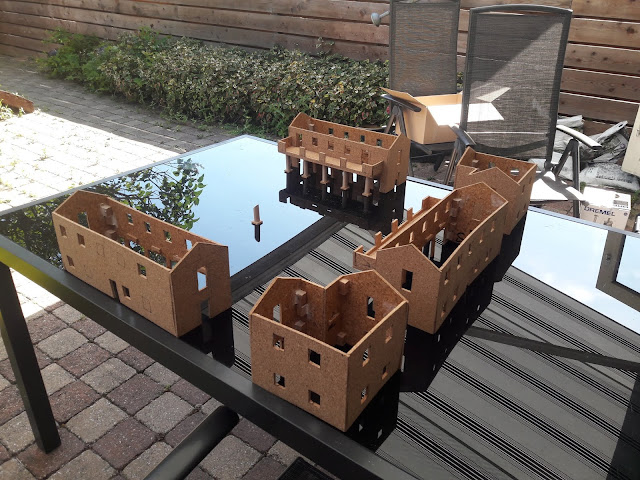Last episode's cliffhanger was of course a bridge, to be hung between tow housing block so as to facilitate a second level of play.
And with that the project is practically finished. The house without balcony received some shades for over the porches and that was it. And of course the graffiti, which was a Roman invention as far as I know.
The entire table, including the not-quite-finished temple from the starter set.
The balconies were made from matchsticks, carved with a motor tool and glued together in that typical Roman symmetrical woodwork. The bridges were made in the same way.
The one piece of graffiti that is not historical, but literary. Anyone (except Sander :) ) who knows its source?
Since the terrain is modular it can be placed in all kinds of ways to make squares as well as alleyways.
A game in full swing.
Fierce fighting among the vegetables....
Lucius chickened out....
Mommy mommy I want to see the fight!!!!
My son musing my -extremely narrow- victory which literally depended on the colour of the first pebble of the turn....
On cork....
I built this entire project in cork plate. Growing curious about working with the material and seeing the fantastic results people like Matakishi achieved with it I decided to use it for Rome.
Lets state first that cork plate is a fine material that can be easily worked, glued and painted and even looks like Roman concrete without any special effort. That aside, I don't think it is very well suited to buildings that can be disassembled. It is very flexible which does not help the fit. It is also not very strong and will tear or break relatively easily. If I would attempt this same project again, I would use foamboard or MDF.
I remain convinced however that it is eminently suited for glued-together buildings. Alas, I usually lack the storage space for such things, so I don't see myself using cork again any time soon.









































